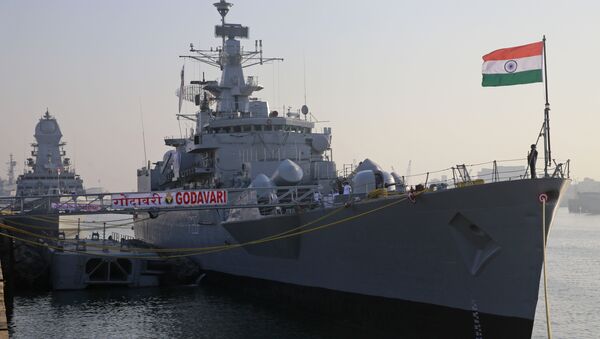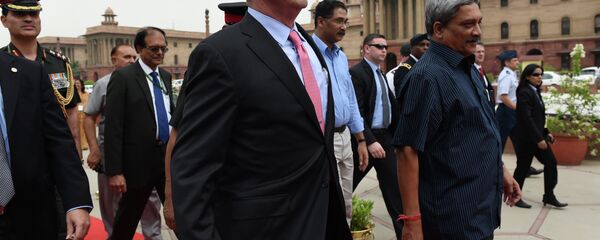But ever since Narendra Modi came to power, he has set maritime dominance as the priority of the government in order to check the Chinese aggressive policy in the Indian Ocean region and in the South China Sea.India has a land frontier of 15,200 km but it also possesses a coastline 7,500 km long with over 1,200 islands and Exclusive Economic Zones of 2 million sq. km. Thus considering the huge coastline, possessing thousands of islands and facing increasing threat from the sea, India is gearing to become a naval power. India’s strategy to increase its maritime domain has both commercial as well as strategic aspects. India views the growing civil-military consensus on the importance of the sea for prosperity and security of India.
“The Government of India’s initiative to promote maritime activities is important for several reasons. With the onset of globalization world trade is growing faster. Maritime transport handles 78 percent of the world trade by volume and over 70 percent by value. India’s sea borne trade is 90 percent by volume and 70 percent by value. So a major effort is required on the part of the government to promote maritime trade so that India gets larger share in terms of its own ships carrying its trade. Because it’s also a strategic objective that Indian goods should be carried in the Indian ships,” former Indian ambassador to the Philippines and Tajikistan, Yogendra Kumar told Sputnik in an exclusive interview.
The Indian government’s strategy is to first develop the ports and coastal areas and make them a hub of commercial activity.
Yogendra Kumar further added “When India wants to play a major role in the maritime world whether in the Indian Ocean or South China Sea or the Mediterranean or Atlantic or the East China Sea or the Pacific; you can do well if your shipping and maritime center is developed well. It will have an impact on the ocean economy. Ocean economy is what you tap the sources of the ocean for economic development.”
Apart from India’s strategy to economically develop its coastal areas, Indian Navy has also charted out a long term strategy for expanding its sphere of influence in the Indian Ocean and beyond.
“As far the role of the Indian navy is concerned, the maritime border or the maritime balance of forces in the India Ocean suits Indian interests. There are several reasons for that, one is that India’s relations with the US are getting closer and the US has a considerable stake in the maintenance of current maritime order. Here the interest of the Indian Navy and the US converge. So that gives the opportunity to share the growth of the maritime order in such a way that we do not fall prey to the growing tension in the South China Sea or East China Sea and now you will find the tension growing in the Mediterranean. There again the initiative can be of many kinds, one being the development of India’s naval capacity. Second is the development of Maritime domain awareness. The Indian navy has a surveillance mechanism which tracks the movement of ships and gives an idea of the security situation. Another aspect is the development or the relationship between the Pakistan and Chinese navy so if we develop our capabilities enough that will contain the situation very much,” the former Indian ambassador told Sputnik.
Thus, India is flexing its muscles in the Indian Ocean and to a certain extent in the South China Sea to thwart China's strategy. Further, through its naval supremacy India is also trying to become a net security provider to the countries along the Indian Ocean.




